|
Ryokans are a unique lodging option in Japan. They are Japanese inns that offer an opportunity to stay in a traditional style room with tatami mats, futon bedding, Japanese decor, and other accents. Ryokans range from moderately priced to very expensive depending on the location, time of year, and level of amenities. Here is an overview of what you can expect to experience while staying at a ryokan. The pictures below are from a June, 2017 stay at Seikoro Ryokan. Room Features When staying at a ryokan, expect your room to be covered in tatami mats. You are required to take off your shoes when walking on tatami mats in any part of the ryokan. Beds are usually futons set on the floor. Sleeping on a futon is more comfortable than you would imagine. You may find a table with cushions or floor seats along with items to make tea. When booking a room, check to see if you will have your own bathroom or if it is shared in a hallway. There is not much storage space in rooms as most of it is used to store futons and other items. 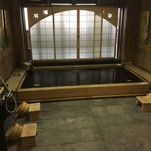 Men's bath Men's bath Onsen Bath Many ryokans have a onsen bath for guests to use during their stay. This bath pumps natural hot spring water into a bathing area separated by gender. It is a very relaxing experience and one of the main reasons to stay at a Ryokan. There are rules for using the baths such as showering beforehand. If you are unfamiliar with the rules, look for a posted sign or ask a employee. Traditional Japanese Cuisine Another attraction to ryokans is the opportunity to eat traditional japanese meals. Many ryokans serve a Japanese style breakfast and some also offer dinner. Japanese breakfasts often include fish, seasonal vegetables, and rice among other small dishes. If you are not a fan of Japanese cuisine, ask for a Western style breakfast instead. Most ryokans serve meals in your room. The meals are usually extra, but well worth the experience. The location for Seikoro Ryokan in Kyoto, Japan Den Den Town, also known as Nipponbasi, is a shopping district in the Naniwa Ward of Osaka. It is about a ten minute walk south from the heart of Dontonbori. It is often referred to as a mini-Akihabara for the plethora of anime, manga, electronics, and other hobby shops. Swing by one of the area's maid cafes for a truly unique experience. If you are unable to visit Akihabara or a fan of Japanese entertainment, plan time to explore the area. Here are a few of the must-see shops around Den Den Town. GEE!Store: 11 a.m. - 8 p.m. Daily A great place to stop inside if you are a fan of anime merchandise or cosplay. They carry a wide variety of Cospa merchandise for the most popular anime series such as Dragon Ball Z, Neo Genesis Evangelion, One Piece, and more. Their large assortment of cosplay outfits are located in the rear of the store. It is hard to leave without buying a hat, t-shirt, key chain, or souvenir. Joshin Super Kids Land: HQ: 10 a.m. - 8 p.m. Daily Joshin is best known for their massive selection of Gundam models and figurines. They also carry model trains and kids toys among other hobby related items. If you are a fan of the Gundam series, Joshin should be on your list of places to visit. 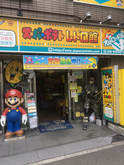 Super Potato entrance Super Potato entrance Super Potato: 11 a.m. - 9 p.m. Daily A collector's paradise for retro games, Super Potato is one of the most famous video game stores in Japan. They have multiple locations in Osaka. The amount of retro systems, games, and selection is amazing. They also sell video game related merchandise and accessories. Be sure to take a photo next to Mario and Solid Snake out front. 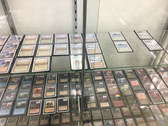 Magic: The Gathering cards Magic: The Gathering cards Yellow Submarine Namba 3 Shop: 11 a.m. - 8 p.m. Daily This is the place to go if you are interested in collectible trading card games. They carry an extensive collection of singles and sealed product for Pokemon, Magic: The Gathering, and other Japanese collectible trading card games. Head to the top floor for an impressive selection of Magic: The Gathering singles and rare booster packs. Animate: 10 a.m. - 9 p.m. Daily
This is the definitive place for anime fans to visit in Osaka. The shop has multiple floors of movies, manga, soundtracks, anime, video games, and plenty of related merchandise. You can easily spend a few hours just browsing everything they have to offer. Bring some loose coins to spend on gacha machines located outside and on each floor. Japan's modern fashion and electronics are well-known. Travel to Tokyo or Osaka and you will find more high-end shops than you could ever want to visit. A great way to one-stop shop for clothes and other goods is to visit one of the premier Japanese department stores. General and Specialized Department Stores: Not all department stores are created equal. Yodobashi Camera is well known for its multiple floors of electronics. Shibuya 109 is very popular for teenage woman's fashion containing floors of boutiques. There is a separate store for men nearby called 109Men's. If you are interested in home goods, Tokyu Hands has it all. For those looking for a little bit of everything, Tokyu's main chain of stores are great options. Floors, Floors, and More Floors Some of the larger department stores have over ten floors of shopping including restaurants. It is a good idea to look at a map by the stairs or elevator and scout which floors you want to visit. Each floor usually represents a different type of customer such as teen fashion, accessories, men's sportswear, children's apparel, etc. Top or bottom floors tend to have restaurants and shops selling various food products. Duty Free: A benefit to shopping in department stores is the easiness to declare duty free or tax free purchases. Take your purchases to a designated counter for reimbursement and special packing. The minimum purchase for a single transaction must be over ¥5,000 (about $50). For more specific information, there is a great duty-free explanation at the Official Kyoto City Travel Guide website. Amazing Food:
Some of the best and reasonably priced restaurants are found at department stores and shopping centers. It is one of the best kept secrets that many tourists never learn. You can find multiple types of cuisine and styles of dining. Umegaoka Sushi No Midori Sohonten Shibuya is regarded as the best reasonably priced sushi in Shibuya, Tokyo. This restaurant is located on the fourth floor of the Tokyo Mark City East building. Finding it can be tricky, but well worth the effort. They have a takeout window if you cannot wait long for a table. 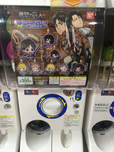 As you walk the streets and shopping districts of Japan, you may stumble upon odd looking vending machines. These are no ordinary dispensers with foreign objects inside. They are in fact gacha, short for gashapon machines. By putting money into the machine (varies from ¥100 to ¥300 or $1 to $3) and turning the knob, a random plastic capsule comes out containing a mystery item. Each gacha machine has a theme of items available inside. The various items are displayed on the machine and can include stickers, figurines, pins, key chains, and other trinkets. Gacha machines are a game of chance that entices people to play multiple times to collect a specific item or set. Gacha items can also be purchased from hobby shops found in places like Osaka's Den-Den Town or Tokyo's Akihabara. 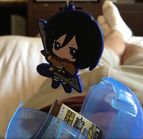 The images above show a gacha machine that contains eight key chains from the Attack on Titan anime series. Putting ¥300 into the machine and turning the knob resulted in a Mikasa key chain. It was a lucky pull because Mikasa is one of the most popular characters in the show. You can find gacha machines scattered everywhere around hobby shops, conbinis, Don Quijote, Pokemon Centers, and other shopping locations. The gacha mechanics are also found in video games such as the new Nintendo mobile release, Fire Emblem: Heroes. Here is a great article that highlights gacha found in the game. Try not to spend all of your loose coins next time you come across a slew of gacha machines. |
Follow me
on Instagram @card_knock_life Categories
All
Archives
July 2024
This website contains affiliate links
|
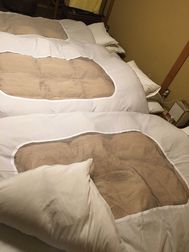
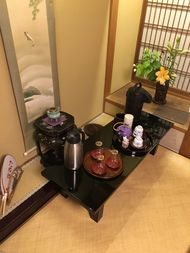
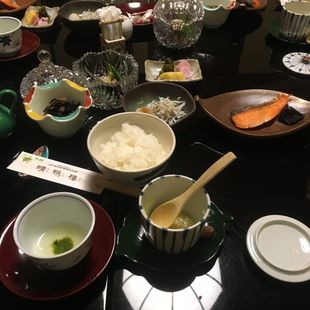
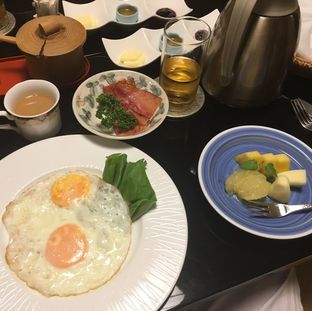
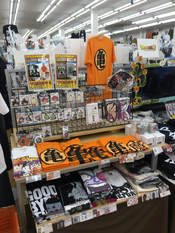
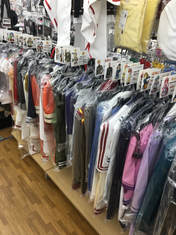
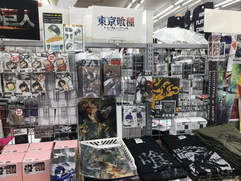
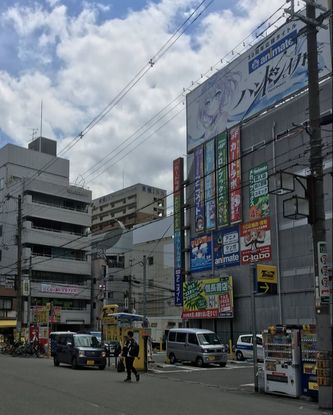
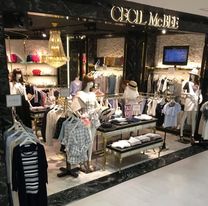
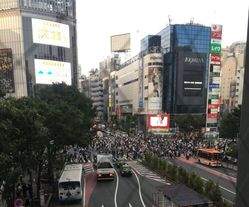
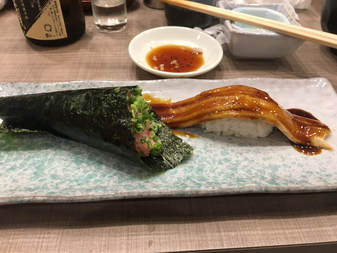
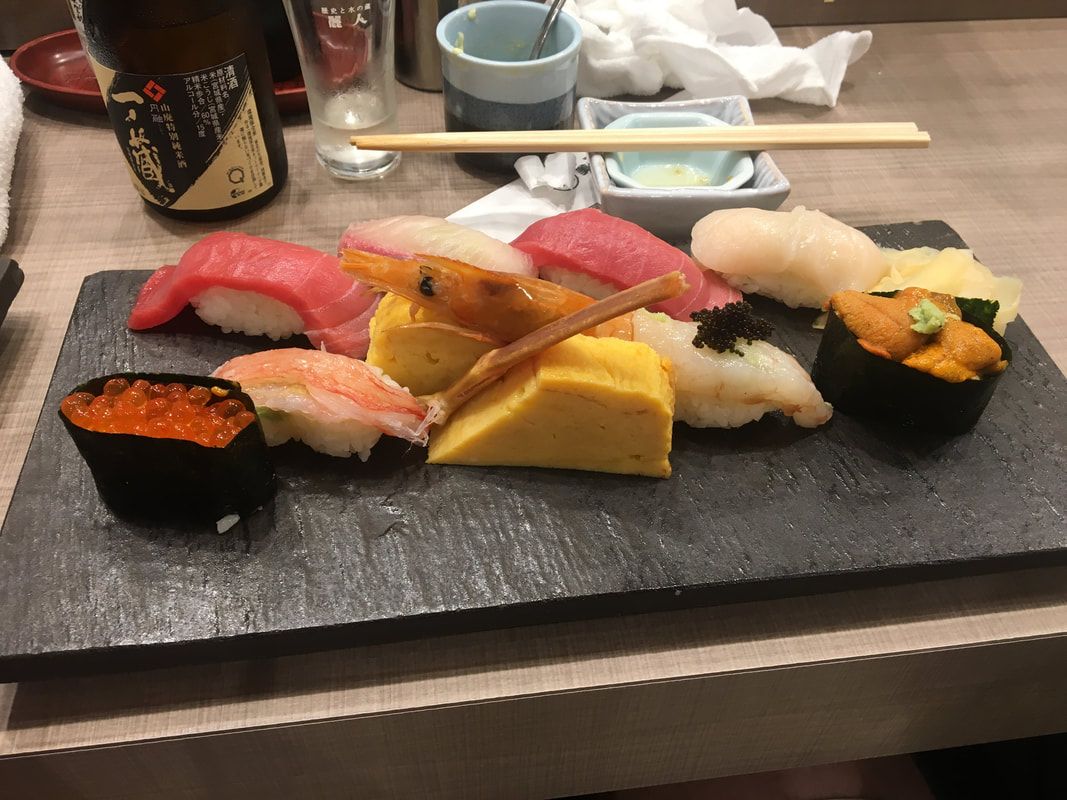

 RSS Feed
RSS Feed
